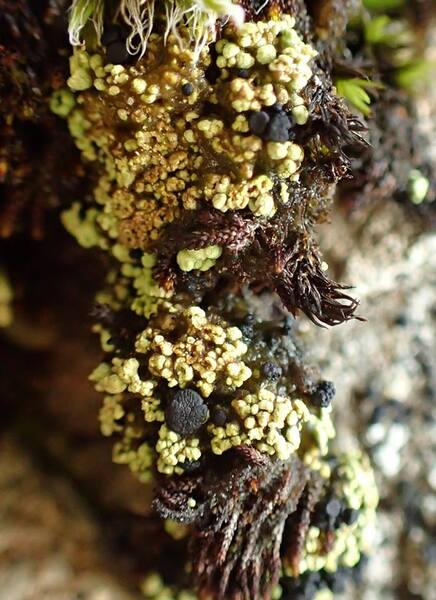Arthrorhaphis alpina (Schaer.) R. Sant.
in Hawksworth & al., Lichenologist, 12: 106, 1980. Basionym: Lecidea flavovirescens var. alpina Schaer. - Lich. Helv. Spicil.: 162, 1833.
Synonyms: Arthrorhaphis citrinella var. alpina (Schaer.) Poelt; Bacidia alpina (Schaer.) Vain.; Bacidia citrinella subsp. alpina (Schaer.) J.R. Laundon; Bacidia flavovirescens var. alpina (Schaer.) A.L. Sm.
Description: Thallus crustose, areolate, forming a compact, 1(-2) cm wide crust, esorediate or rarely sorediate, the areoles bright yellow-green, matt, thick, 0.5-1(-2) mm wide, convex to almost bullate, sometimes crateriform when sorediate, scattered to mostly contiguous, with a farinose epinecral upper layer and a rough surface. Cortex with a 7-10 µm thick epinecral layer; medulla well-developed, white to yellowish, filled with Ca-oxalate crystals insoluble in acetone (visible at least at the base in sections of sorediate areoles). Apothecia rather rare, lecideine, black, located among the areoles and sometimes arranged in rows, rounded, sessile, 0.2-0.7(-1.7) mm across, with an initially concave then flat, smooth disc and a thin, smooth, shiny, finally often excluded proper margin. Proper exciple black and almost carbonized in outermost part, dark grey-green within; epithecium dark grey green to blue-green, K-; hymenium colourless, inspersed with oil droplets, I-; paraphyses lax, slender, branched and anastomosing, not apically thickened; hypothecium pale, the lower part often brownish. Asci 8-spored, bitunicate, cylindrical or narrowly clavate, I-, slightly thickened at apex, with a small ocular chamber. Ascospores (4-)6-11(-15)-septate, hyaline, acicular with pointed ends, thin-walled, (20-)25-45(-60) x 3-4.5(-5) µm, usually not uniseriate in the asci. Photobiont chlorococcoid. Spot tests: cortex and medulla K-, C-, KC-, P-, UV+ orange. Chemistry: rhizocarpic acid and epanorin.
Growth form: Crustose
Substrata: soil, terricolous mosses, and plant debris
Photobiont: green algae other than Trentepohlia
Reproductive strategy: mainly sexual
paras Baeomyces spp.
Commonnes-rarity: (info)
Alpine belt: rather rare
Subalpine belt: rather common
Montane belt: absent
Dry submediterranean belt: absent
Humid submediterranean belt: absent
Padanian area: absent
pH of the substrata:
1 2 3 4 5
Solar irradiation:
1 2 3 4 5
Aridity:
1 2 3 4 5
Eutrophication:
1 2 3 4 5
Poleotolerance:
0 1 2 3
Altitudinal distribution:
1 2 3 4 5 6
Rarity
absent
extremely rare
very rare
rare
rather rare
rather common
common
very common
extremely common
Loading data...
Occurrence data
Predictive map
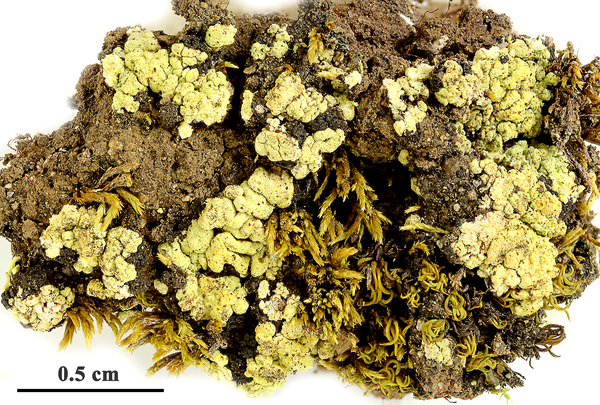
Felix Schumm - CC BY-SA 4.0
[17216], Venezuela, Merida, Distr. Rangel, zwischen Laguna Mucubaji und Pico Mucuñuque, etwa 15 km südöstlich von Apartaderos, am Boden in Paramo-Vegetationslücken, 3500 m. 8°45' N, 70°45' W. Leg. K. Kalb & M. López-Figueiras, 07.08.1989, det. W. Obermayer. KALB: LICHENES NEOTROPICI 577.
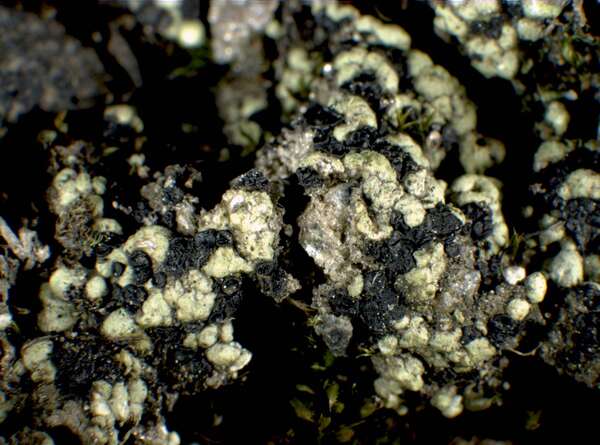
P.L. Nimis; Owner: Department of Life Sciences, University of Trieste
Herbarium: TSB (32908)
2001/12/13
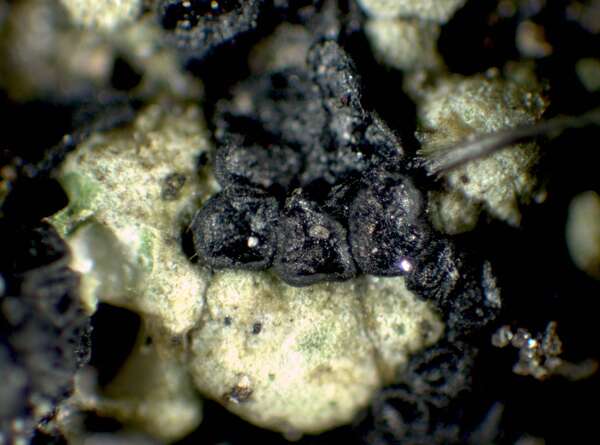
P.L. Nimis; Owner: Department of Life Sciences, University of Trieste
Herbarium: TSB (32908)
2001/12/13
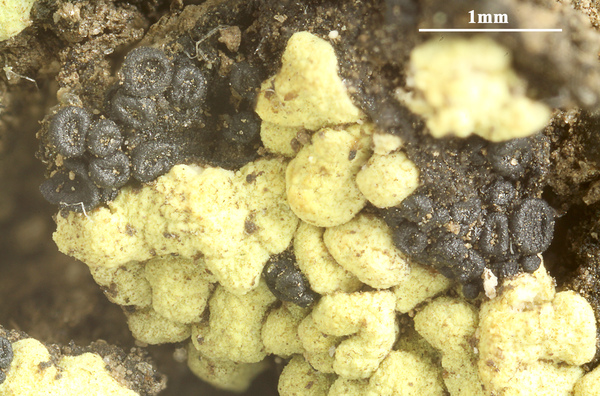
Felix Schumm - CC BY-SA 4.0
[17216], Venezuela, Merida, Distr. Rangel, zwischen Laguna Mucubaji und Pico Mucuñuque, etwa 15 km südöstlich von Apartaderos, am Boden in Paramo-Vegetationslücken, 3500 m. 8°45' N, 70°45' W. Leg. K. Kalb & M. López-Figueiras, 07.08.1989, det. W. Obermayer. KALB: LICHENES NEOTROPICI 577.
Growth form: Crustose
Substrata: soil, terricolous mosses, and plant debris
Photobiont: green algae other than Trentepohlia
Reproductive strategy: mainly sexual
paras Baeomyces spp.
Commonnes-rarity: (info)
Alpine belt: rather rare
Subalpine belt: rather common
Montane belt: absent
Dry submediterranean belt: absent
Humid submediterranean belt: absent
Padanian area: absent
pH of the substrata:
| 1 | 2 | 3 | 4 | 5 |
Solar irradiation:
| 1 | 2 | 3 | 4 | 5 |
Aridity:
| 1 | 2 | 3 | 4 | 5 |
Eutrophication:
| 1 | 2 | 3 | 4 | 5 |
Poleotolerance:
| 0 | 1 | 2 | 3 |
Altitudinal distribution:
| 1 | 2 | 3 | 4 | 5 | 6 |
Rarity
absent
extremely rare
very rare
rare
rather rare
rather common
common
very common
extremely common
Loading data...
Occurrence data
Predictive map

Felix Schumm - CC BY-SA 4.0
[17216], Venezuela, Merida, Distr. Rangel, zwischen Laguna Mucubaji und Pico Mucuñuque, etwa 15 km südöstlich von Apartaderos, am Boden in Paramo-Vegetationslücken, 3500 m. 8°45' N, 70°45' W. Leg. K. Kalb & M. López-Figueiras, 07.08.1989, det. W. Obermayer. KALB: LICHENES NEOTROPICI 577.

P.L. Nimis; Owner: Department of Life Sciences, University of Trieste
Herbarium: TSB (32908)
2001/12/13

P.L. Nimis; Owner: Department of Life Sciences, University of Trieste
Herbarium: TSB (32908)
2001/12/13



